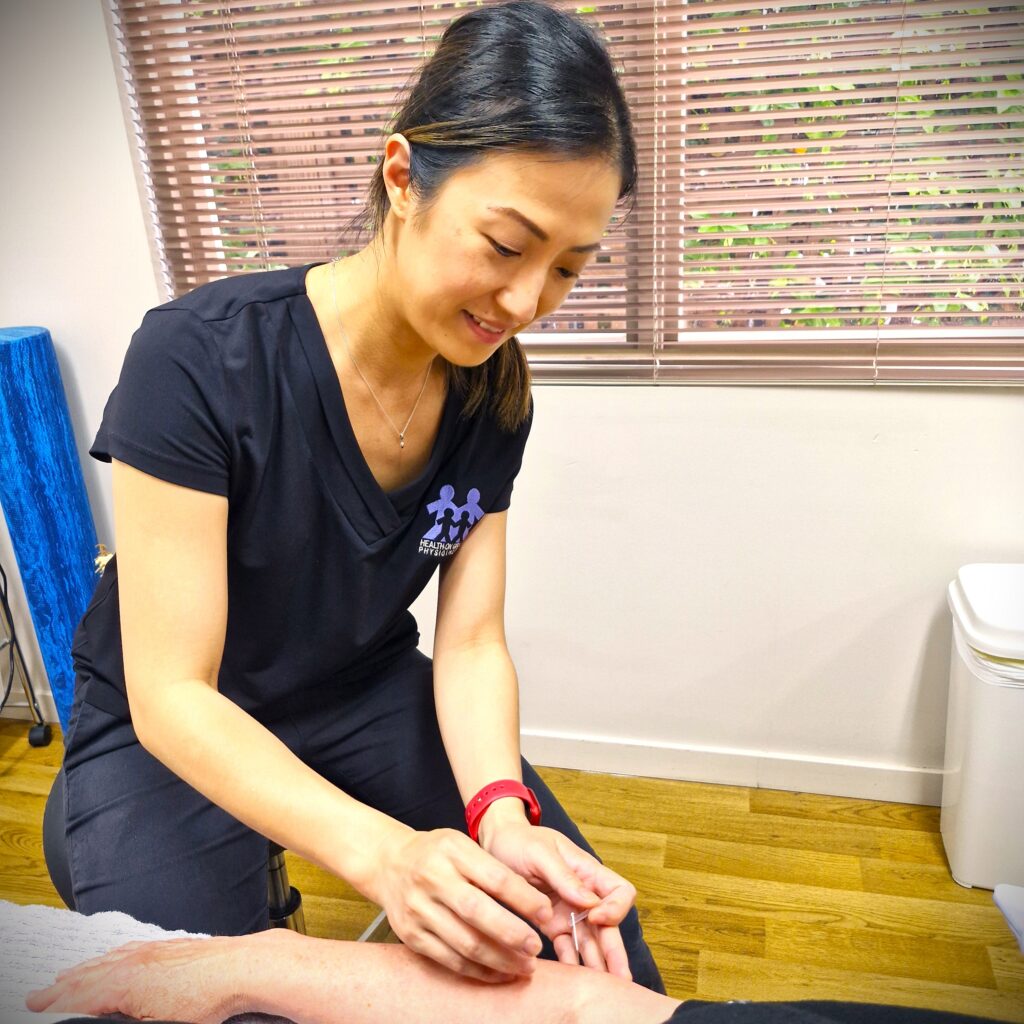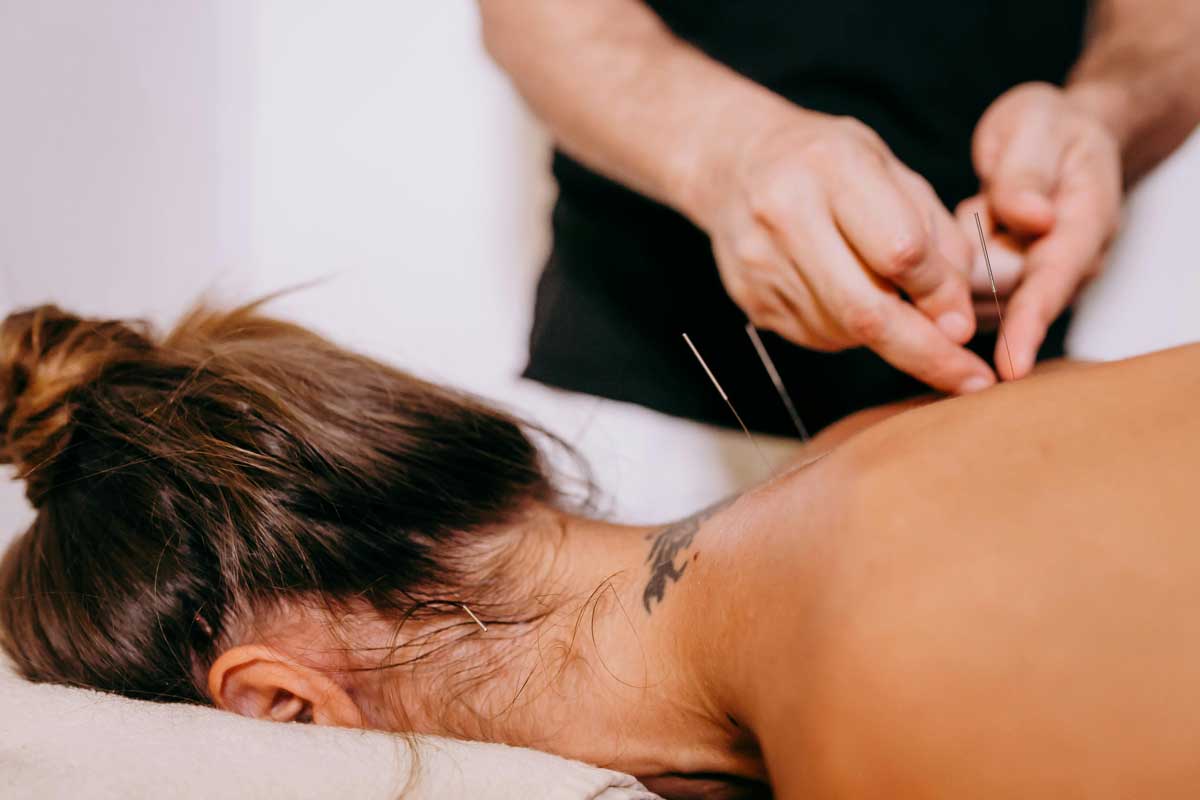Dry Needling and Acupuncture are safe, precise techniques used within physiotherapy to help relieve pain, reduce muscle tension, and promote healing. While both treatments use fine, sterile needles, they have different origins and approaches:
Health on Grange Physiotherapy offers both Dry Needling and Western Medical Acupuncture for Musculoskeletal Pain Conditions as part of a personalised and holistic physiotherapy plan to help you recover more quickly and improve your quality of life.

These techniques can be highly effective for a wide range of musculoskeletal and nerve-related conditions, including:
When used as part of your physiotherapy treatment plan, Dry Needling and Acupuncture can:
We often combine these techniques with other physiotherapy approaches such as manual therapy, exercise rehabilitation, and posture retraining for better, longer-lasting results.
Your safety and comfort are always our top priorities at Health on Grange Physiotherapy. We use only single-use, sterile needles for every treatment, and all procedures are performed by qualified, experienced physiotherapists who have undertaken advanced training in needling techniques.
The process is quick and precise, and while you may feel a mild twitch or slight ache when the needle is inserted, any discomfort is usually minimal and short-lived. Before we begin, we take the time to explain each step so you know exactly what to expect, and we adjust our approach to ensure you feel at ease throughout the session.
For patients who are nervous about needles, we can start with gentle techniques and work gradually, building your confidence and comfort with the process. We aim to always make your experience as positive and reassuring as possible while helping you achieve the best treatment results.
Targeted pain relief – pinpoint accuracy for muscle knots and painful points.
Faster recovery – by accelerating tissue repair and reducing inflammation.
Holistic care – addressing both the physical and neurological aspects of pain.
Drug-free treatment option – ideal for those looking to reduce medication use.
Improved function – helping you get back to work, sport, and daily activities sooner.

We are proud to be a trusted local Adelaide physiotherapy clinic with a strong reputation for hands-on, patient-focused care. Our qualified team has advanced training in dry needling, led by our Physiotherapist, Cailynn See, who is also trained in Western Medical Acupuncture for Musculoskeletal Pain Conditions. Our physiotherapists ensure each treatment is delivered with precision, safety, and attention to your unique needs. We take a personalised approach to every appointment, tailoring each session to your specific condition, comfort level, and recovery goals.
Q: Does dry needling hurt?
A: Most patients feel only a slight prick when the needle is inserted, followed by a mild ache or muscle twitch. Discomfort is usually minimal and temporary, and many people find the treatment relaxing.
Q: Is dry needling safe?
A: Yes — when performed by a qualified physiotherapist, dry needling is very safe. At our Adelaide clinic, we use single-use, sterile needles and follow strict hygiene protocols.
Q: How many sessions will I need?
A: The number of sessions depends on your condition, its severity, and your treatment goals. Some patients notice improvement after one session, while others benefit from a short course combined with exercise rehabilitation.
Q: What conditions benefit most from dry needling and acupuncture?
A: These techniques are effective for neck pain, back pain, sports injuries, chronic muscle tension, headaches, and specific joint and tendon problems.
Q: Can I have dry needling or acupuncture if I’m scared of needles?
A: Absolutely. Our physiotherapists will explain the process in detail and begin with gentle techniques to ensure you feel comfortable at every stage. Many patients who were initially nervous find the treatment surprisingly easy to tolerate.
If you’re experiencing muscle pain, tension, or stiffness, or if you want to explore how Dry Needling or Acupuncture can enhance your physiotherapy results, our friendly team is here to help.